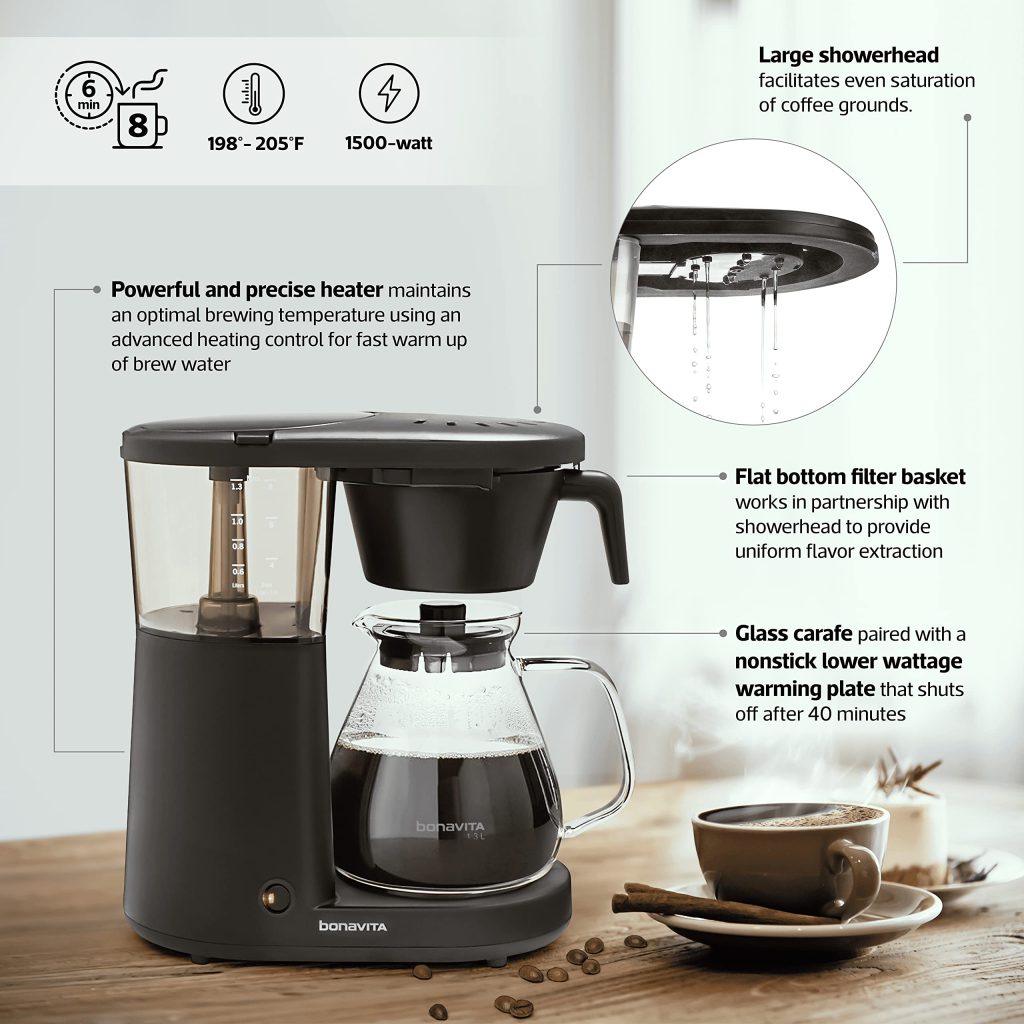Espresso is a popular coffee beverage that is enjoyed by many coffee lovers around the world. It’s a rich, flavorful, and intense cup of coffee that requires a specific brewing process. While espresso machines can be expensive and intimidating to use, you can actually make espresso using a Bonavita coffee maker. In this article, we’ll provide you with tips and tricks for brewing espresso using a Bonavita coffee maker.

What is Espresso?
Before we dive into how to make espresso, it’s important to know what espresso is. Espresso is a type of coffee that is brewed under high pressure using hot water. The result is a concentrated shot of coffee that has a rich and intense flavor. Espresso is an essential ingredient in many popular coffee drinks, such as lattes and cappuccinos.
While a Bonavita coffee maker isn’t designed specifically for making espresso, it can still be used to make a reasonable approximation of espresso. Here are some tips and tricks for brewing espresso with your Bonavita coffee maker.
Use Fresh and High-Quality Coffee Beans
The first step in making great espresso is to use fresh and high-quality coffee beans. Espresso requires a finely ground coffee bean that is roasted to perfection. Avoid pre-ground coffee as it won’t be as fresh as whole beans. Invest in a good burr grinder to achieve the perfect grind size.
Use a Dark Roast Coffee
Espresso is traditionally made with dark roast beans. Darker roasts are better suited to the high-pressure brewing process required for espresso. This is because dark roasts tend to have a more complex and intense flavor, which is perfect for espresso.
Use the Right Ratio of Coffee to Water
To make espresso, you need a precise ratio of coffee to water. A good starting point is a ratio of 1:2, which means one part coffee to two parts water. Use a scale to accurately measure your coffee and water. For example, if you’re using 20 grams of coffee, you’ll need 40 grams of water.
Use a Fine Grind Size
Espresso requires a very fine grind size. You can achieve this by using a burr grinder and adjusting the grind size to the finest setting. A fine grind size ensures that the water is in contact with the coffee for the right amount of time, resulting in a perfectly extracted shot of espresso.
Tamp the Coffee Grounds
Once you’ve ground your coffee beans to the right size, it’s time to tamp them. Tamping is the process of compressing the ground coffee into a puck using a tamper. Tamping ensures that the water flows through the coffee evenly and helps to extract the best flavor.
For a Bonavita coffee maker, you can’t use a portafilter as you would do in an espresso machine. Instead, you need to use a basket that fits directly into the coffee maker’s filter basket. Put the finely ground coffee into the basket, and then use a tamper to press down on the coffee. The tamper should be leveled to the basket rim or slightly below it. Tamp with consistent pressure, and you will get an even puck of coffee that the water can flow through easily.
Brewing Process
Once you’ve tamped your coffee, it’s time to start the brewing process. For a Bonavita coffee maker, we recommend using the pre-infusion mode to help achieve the best possible extraction. Pre-infusion means that you wet the puck of coffee with a small amount of water before you start the brewing process. This helps to ensure a more even extraction of flavors and also lets the coffee expand.
Pour the measured amount of water into the reservoir, and then place the filter basket with the tamped coffee into the machine’s basket. Turn on the machine, and the pre-infusion mode will activate, saturating the coffee and allowing it to expand before the brewing process starts. After approximately 30 seconds, the brewing process will start, and the machine will pour hot water onto the puck of coffee. The result should be a rich, flavorful, and intense shot of espresso.
Use Fresh Milk
Once you’ve brewed your espresso shot, it’s time to prepare the milk for your latte or cappuccino. Just like with your coffee beans, it’s important to use fresh milk. We recommend using whole milk as it provides a creamy texture and is less likely to curdle than skim or non-dairy milk.